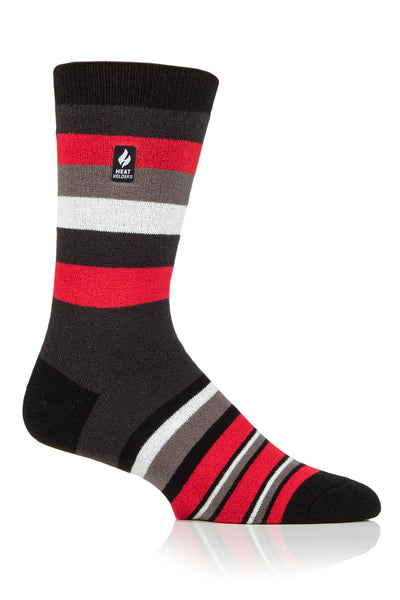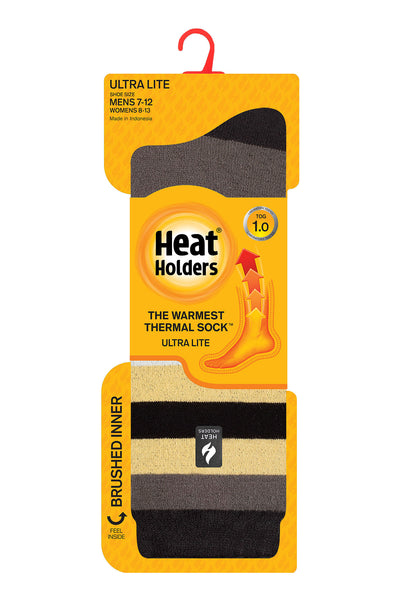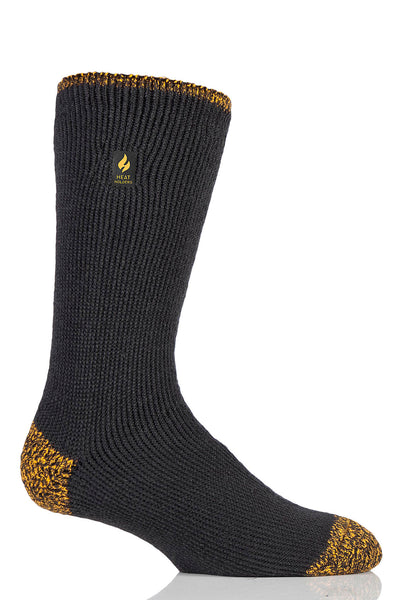When it comes to footwear, socks are often an overlooked component, yet they play a vital role in comfort and performance. The thickness of your socks can significantly impact your experience across various activities. In this article, we will explore the different aspects of sock thickness, how it affects your comfort during activities, and the best practices for choosing and maintaining your socks.
Understanding Sock Thickness
The Basics of Sock Thickness
Sock thickness refers to the amount of material used in a sock, which directly affects its warmth and cushioning properties. Generally, sock thicknesses are classified as ultra-thin, thin, medium, thick, and extra-thick. Each category serves different purposes and is intended for specific activities.
Ultra-thin socks typically provide the least amount of cushioning and warmth but offer high breathability. They are great for warmer conditions or when you want a snug fit in your shoes. Conversely, extra-thick socks provide substantial cushioning and insulation, ideal for colder climates or when comfort is the utmost priority. For instance, hikers often opt for thick, cushioned socks to protect their feet from blisters and provide support during long treks. The choice of sock thickness can significantly impact the overall enjoyment of outdoor activities, making it essential to consider the environment and the type of footwear being used.
How Sock Thickness Affects Comfort
The relationship between sock thickness and comfort is influenced by various factors, including fit, material, and personal preference. A thicker sock may give you a plush feeling but can also cause overheating or discomfort if the shoe is not designed to accommodate additional bulk.
Heat Holders® socks are made in a proprietary manufacturing system that takes advanced thermal yarns, long-loops, and intensively brushes it to create a thick, chunky inner that's amazingly soft. You have to fell it to believe it! They're like walking on a cloud! They also trap warm air next to your skin keeping your warmer for longer in almost all cold conditions.
Moreover, proper cushioning can absorb shocks during impact, reducing fatigue and discomfort during physical activities. Thus, selecting the right sock thickness can enhance your overall experience, ensuring you perform at your best. Additionally, the material composition plays a crucial role; for example,
Furthermore, many athletes and outdoor enthusiasts have discovered that investing in quality socks tailored to their specific needs can lead to improved performance and greater enjoyment in their pursuits.
Factors to Consider When Choosing Sock Thickness
Activity Type and Sock Thickness
Your choice of sock thickness should align with your planned activity. For instance, athletes engage in varying sports that demand unique sock properties. Thick socks may inhibit quick foot movements in activities like sprinting, while they might be necessary for long-distance hiking to prevent blisters and provide comfort.
Here’s a quick breakdown of sock thickness recommendations based on activity type:
-
Running: Thin to medium thickness for breathability and moisture-wicking.
-
Walking: Medium thickness for comfort and support.
-
Hiking: Medium to thick depending on terrain and boot type.
-
Winter Sports: Thick for insulation and cushioning.

Additionally, it's important to consider the duration of the activity. For example, if you're planning a long day of hiking, opting for a thicker sock can provide added cushioning and support, reducing fatigue over time. Conversely, for shorter runs or walks, a thinner sock might suffice, allowing for greater agility and foot movement. Understanding the nuances of your specific activity can greatly enhance your overall experience and performance.
The Right Sock in the Cold
If you're training or walking in the winters, Heat Holders® has the sock for you. Sold in 3 Levels of Warmth ORIGINAL™, LITE™, and ULTRA LITE™ (7X, 5X, or 3X warmer than the average cotton sock) these socks act like a thermostats for your feet: the colder you feel, the thicker the profile you choose.
Your Shoes and Sock Thickness
The tighter your shoes, the thinner the socks you have to wear. And many people ignore the cold to wear standard dress socks that are often too thin to keep your feet warm. Again, Heat Holders® 3 Levels of Warmth comes to the rescue. Their ULTRA LITE™ socks are thin enough to be comfortable in most formal shoes and they are 3X warmer than the average cotton sock. With Heat Holders®, you have the choice.
Material and Sock Thickness
The material of socks can heavily influence their thickness and overall feel. Common materials include wool, synthetic fibers, and blends. Wool, for example, often provides extra warmth, making thicker wool socks an excellent choice for colder conditions.
Moreover, synthetic materials often enhance breathability and moisture-wicking capabilities. Always consider the materials when selecting the ideal sock thickness for your needs.
In addition to comfort and performance, the durability of the sock material is also a critical factor. High-quality synthetic fibers can resist wear and tear better than natural fibers, making them ideal for rigorous activities. Furthermore, some brands offer reinforced areas in their socks, such as the heel and toe, which can extend the lifespan of the sock, especially for those who are frequently on their feet or engaging in high-impact sports.
Humidity and Sock Thickness
Consider the impact of humidity on your sock choice. In humid environments, even a thicker sock made from moisture-wicking fabric can help keep your feet dry by drawing sweat away from your skin.
Sock Thickness for Different Activities
Best Sock Thickness for Hiking
For hiking, the recommended sock thickness largely depends on the terrain, weather, and type of boots you're wearing. A medium to thick sock is often ideal, as it offers cushioning against impacts and helps prevent blisters. Wool-blend socks are particularly effective because they wick moisture away while providing warmth.
Additionally, ensure your socks fit well; too tight can restrict circulation, and too loose can cause chafing. It's also worth noting that the height of the sock can play a role in your comfort. Crew-length or knee-high socks can provide extra protection against brush and debris, while also helping to keep your legs warm during cooler hikes. When selecting socks for hiking, consider those with reinforced heels and toes for added durability, especially if you plan to tackle rocky or uneven terrain.
Ideal Sock Thickness for Running
For runners, choosing the right sock thickness can be crucial for performance and comfort. Most runners benefit from a thin to medium sock that emphasizes moisture management and breathability. These socks should fit snugly but avoid excess material that may cause bunching or blisters during long
Look for features such as arch support and targeted cushioning, which can enhance comfort on the run. Additionally, consider the fabric composition; synthetic fibers like polyester or nylon are excellent for moisture-wicking, while some runners prefer Merino wool for its natural temperature regulation and odor resistance. The right sock can also help in maintaining the foot's natural alignment, reducing the risk of injuries like plantar fasciitis. Don't forget to replace worn-out socks regularly, as they can lose their supportive qualities over time.

Sock Thickness for Winter Sports
Winter sports necessitate thicker socks to combat low temperatures and provide ample insulation. Whether skiing, snowboarding, or ice skating, a thick sock is essential not only for warmth but also to cushion the feet against the rigid confines of winter boots.
Wool or synthetic socks are advisable as they effectively manage moisture and maintain warmth. Moreover, consider socks with added padding in critical areas such as the shin and heel for enhanced protection and comfort. It's also beneficial to look for socks with a blend of materials that include spandex for a snug fit, ensuring they stay in place during intense activity.
Some winter sports socks even come with graduated compression features, which can improve blood circulation and reduce fatigue during long days on the slopes. Lastly, always remember to check the care instructions, as proper washing can extend the life of your winter socks, keeping them in top condition for many seasons to come.
Common Misconceptions About Sock Thickness
Thicker Socks Always Mean More Warmth
A common misconception is that thicker socks automatically provide more warmth. While thickness can contribute to insulation, the material and construction of the sock also play significant roles.
Understanding this difference is critical, as wearing unsuitable socks can lead to cold feet, which can be especially problematic during extended periods in chilly conditions. Additionally, moisture-wicking properties are essential; socks that trap moisture can lead to a chilling effect, negating any warmth benefits. Therefore, when selecting socks for cold weather, it's important to consider not just the thickness but also the fabric composition, such as Merino wool or synthetic blends designed to keep feet dry and warm.
Thin Socks Are Best for Athletic Activities
Another myth is that thin socks are always best for athletic activities. While it's true that many athletic endeavors require breathable materials, it does not mean thicker socks are off the table. In certain sports, like trail running or hiking on rugged terrain, a thicker sock can help provide additional cushioning and prevent blisters.
The key is to balance thickness with activity demands to ensure ample protection and comfort. For instance, during high-impact activities, thicker socks can absorb shock better and reduce the risk of foot fatigue. Moreover, some athletes prefer a thicker sock for added support around the ankle, which can be particularly beneficial for those prone to sprains or injuries. Ultimately, the choice of sock thickness should align with the specific requirements of the sport and the individual’s personal comfort preferences.
Tips for Maintaining the Quality of Your Socks
Washing and Drying Tips for Different Sock Thicknesses
To prolong the lifespan of your socks, it's essential to understand proper washing and drying techniques. For instance, thicker socks, especially those made from wool or blends, should be washed on a gentle cycle with cold water to avoid shrinking or damaging the fibers.
Air drying is recommended for all sock types, as high heat can degrade elastic materials, leading to sagging and reduced support. If you must use a dryer, opt for a low-heat setting.
When to Replace Your Socks
Knowing when to replace your socks can also contribute significantly to your foot health. Look out for signs of wear such as holes, thinning fabric, or loss of elasticity. Regularly replacing your socks ensures you maintain good support and comfort during activities.
As a general rule, consider replacing athletic socks every six months, or sooner if you've noticed significant wear.
Get the Right Sock with Heat Holders®
Choosing the right sock thickness is an essential aspect of optimizing comfort and performance across various activities. By understanding sock thickness basics, considering the specific needs of your activities, and maintaining your socks properly, you can enhance your overall experience and prevent discomfort. Remember to always take into account factors like material, weather conditions, and personal comfort preferences for the best results.
Check out Heat Holders®. They sell socks in 3 Levels of Warmth and a wide range of socks for men, women, and children, so you can be sure to find something that fits your needs. Remember to view their full collection to find the style, color, and warmth profile that will keep your feet warm during the cold winter months. Happy shopping!

















